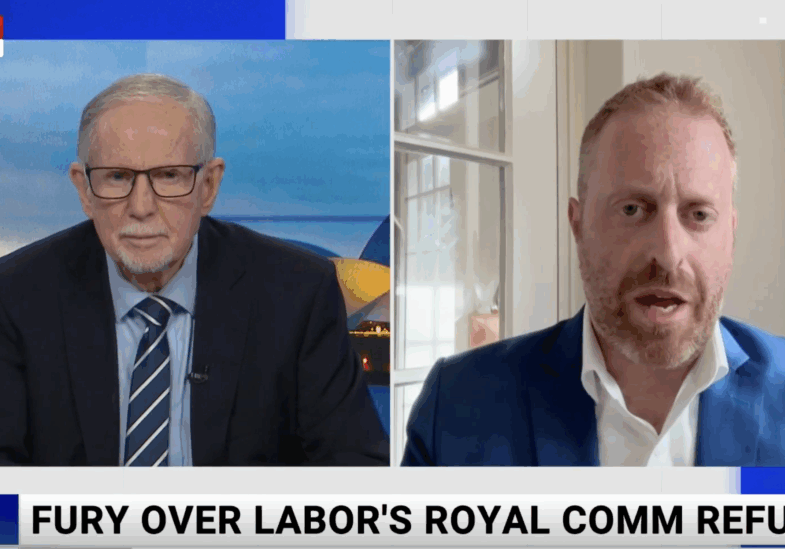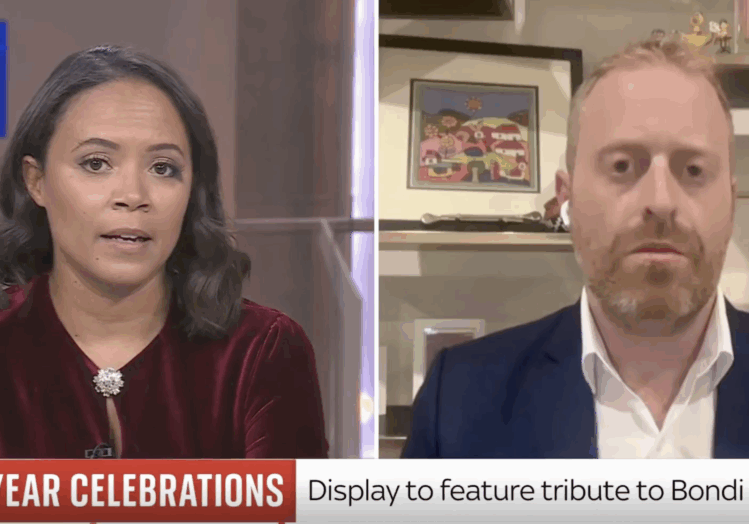FRESH AIR
Reframing Gaza: Iran’s multi-front war against Israel
June 4, 2021 | Oved Lobel

Another round of fighting between Israel and the terrorist factions in Gaza, another wave of statements from those factions and their overseers declaring that they are mere arms of Iran’s Islamic Revolutionary Guard Corps (IRGC), fighting as part of an integrated IRGC jihad from Yemen to Lebanon to Syria and Iraq. Gaza, they all openly proclaim, is simply another front in that war, a colony of Iran’s Islamic Revolution.
Yet most of what passes for analysis of the recent conflict often fails to even mention Iran and instead attempts to paint Hamas and Islamic Jihad activities as a response to particular Israeli policies and actions. The misrepresentation of the proactive, genocidal jihad against Israel’s existence as a reaction to Israeli actions is not only a rejection of chronology and the groups’ own stated goals, but an active disservice to the Palestinian cause.
To conflate the Islamic Revolution and its decades-long war to destroy Israel with legitimate Palestinian grievances is to completely undermine Palestinians who actually seek positive outcomes. Without Iran’s unrelenting jihad, there is likely no war in Gaza or even blockade, and the issue is truly as simple as that. This war, and all the skirmishes with the Gaza factions since 2006, begins and ends with Iran and its pan-Islamic crusade, not with the occupation, not with Sheikh Jarrah, not with any Israeli action beyond existing.
“Our complete gratitude is extended to the Islamic Republic of Iran, which has spared us and the other Palestinian resistance factions nothing in recent years. They have provided us with money, weapons, and expertise. They have supported us in everything, with the grace of Allah. They deserve huge credit. They weren’t with us on the ground, but they were with us through those capabilities,” declared Hamas’ Gaza chief Yahya Sinwar on Al-Jazeera after the ceasefire, adding for good measure, “We support the eradication of Israel through armed Jihad and struggle. This is our doctrine.”
Hamas’ leader-in-exile Ismail Haniyeh also thanked Iran multiple times, speaking to both IRGC head Hossein Salami as well as the leader of its Qods Force, Ismail Qaani, while both Haniyeh and Islamic Jihad leader Ziyad al-Nakhala wrote letters of thanks to Iran’s Supreme Leader Ali Khamenei himself, to which he responded.
Islamic Jihad official Ramez al-Halabi similarly proclaimed, “The mujahideen in Gaza and in Lebanon use Iranian weapons to strike the Zionists. We buy our weapons with Iranian money. An important part of our activity is under the supervision of Iranian experts. The contours of the victories in Palestine as of late were outlined with the blood of Qasem Soleimani, Iranian blood…Almost every home in Gaza has a picture of Qasem Soleimani.”
Iran is widely known to smuggle rockets and other weapons directly to its regional proxies. Additionally, Iran is transferring production capabilities and technical expertise, enabling Hamas and Islamic Jihad to manufacture their own Iran-designed rockets, as has been attested to by both Hamas as well as Islamic Jihad, whose operatives participated in IRGC “train the trainer” programs. Iran even seems to be designing and testing cruder rockets customized for easy local production by its organs in various countries.
Just how integrated Hamas and Islamic Jihad are with the IRGC regional network was made more explicit in this round of conflict, though it is certainly not a new phenomenon; after all, Hamas’ leader Haniyeh was among the very few keynote speakers at Qassem Soleimani’s funeral in Tehran.
Sinwar stated that “Throughout the war, our brothers in the battlefield and in some special units were in contact with our brothers in Lebanon. There was a high level of coordination,” a fact recently reiterated by Hezbollah’s deputy Secretary-General Naim Qassem. Already in 2018, during the “Great March of Return” riots along the Gaza security fence, Sinwar was waxing lyrical not only about Iran’s role in providing financial and military support, but that everything Hamas did was coordinated with the IRGC and Hezbollah, with whom Hamas “work together and coordinate and are in touch on an almost daily basis.” The editor of Hezbollah’s Al-Akhbar daily asserts that a joint military operations room was established in Lebanon to oversee the conflict, staffed with officers from Hamas, Hezbollah, and the IRGC, including Qods Force chief Qaani.
Al-Akhbar further reported that Haniyeh met with Nasrallah in Lebanon last year, where “The two men decided to form committees to follow up on coordination between Hezbollah and Hamas’ Al-Qassam Brigades.”
The Palestinian groups categorize this war, which they dubbed “Sword of Jerusalem,” as merely one front in the IRGC jihad. As al-Halabi put it, “The axis between Jerusalem and Beirut, the axis between Jerusalem and Baghdad, the axis between Jerusalem and Damascus, the axis between Jerusalem and Sanaa, and first and foremost, the axis between Jerusalem and Tehran – it is a victorious axis.” Al-Akhbar notes “The intertwining of the axis [of resistance, all of the IRGC’s regional clients and proxies], and the prevention of singling out any party in it, is a new equation established by the resistance forces in the last battle.”
The mention of Sanaa is particularly notable. As I’ve recently documented, Ansar Allah, often referred to as the Houthis, is a long-standing organ of the IRGC, and it also views its conquest of Yemen within the context of the transnational IRGC jihad to destroy Israel. Hamas thanked Ansar Allah’s leader during the conflict for fundraising and logistical support. Ansar Allah’s representative in Syria went to Islamic Jihad’s offices there to discuss their joint conflict, while Hamas, Islamic Jihad, and other Palestinian representatives spoke in Houthi-controlled Sanaa about their “victory.”
A recent, unverified report by IRGC-linked channels, citing “Palestinian activists,” claimed a Yemeni from the Houthi stronghold in Saada was killed in Gaza, “the first Yemeni martyr in the fight against the Zionist enemy.” This would not be surprising in the least, as Ansar Allah reportedly recruits fighters in Yemen to “liberate the Al-Aqsa Mosque,” and Hamas and Islamic Jihad have a strong political and even military presence under Houthi auspices. Ansar Allah politburo member Abd Al-Wahhab Al-Mahbashi declared in 2020, “the only path is the path to Jerusalem, the path of Jihad against the Jews,” and the group tried swapping Saudi prisoners of war for Hamas activists held in Saudi Arabia.
Al-Akbar reported that Ansar Allah actually contacted Hamas to request “coordinates in a bid to target them [with] Yemeni missiles and drones… However, Hamas informed Sanaa that the situation in the battlefield was very good.” Hamas conveyed that if Israel “crossed the red lines… then Ansarullah can interfere.” Hamas, according to Al-Akhbar, informed Hezbollah that it was planning for a two-week battle with Israel prior to launching its missiles at Jerusalem.
Rockets were also launched from Lebanon and Syria, and a suicide drone, flown from Iraq or Syria – Al-Akhbar claims Syria – was shot down by the IDF. Hamas later expressed their gratitude to the IRGC’s Badr Organization. Sinwar claims the only reason the entire IRGC resistance axis did not attack was “that this was not a real war. We were certain that had the battle intensified, the resistance would have intervened in an active way on all fronts.”
Without Iran, Hamas and Islamic Jihad would lack weapons, training and funds, and would thus have little ability to conduct their jihad that continues to destroy Gaza and immiserate Palestinians. Like Islamic Jihad, Hamas has its roots in the Muslim Brotherhood, but both have long since become adjuncts of the IRGC, although even before the IRGC took control, Hamas’ conspiratorial, explicitly antisemitic charter identified the group as a pan-Islamic jihadist movement that would not rest until Israel was militarily destroyed and an Islamic State founded.
Yet every time there is a major clash between Israel and the Gaza factions, Western media outlets almost universally link it to the Israeli-Palestinian issue, amplifying Hamas’ propaganda and legitimising its actions. It is for precisely this reason that the IRGC likely seized on tensions in Jerusalem to launch another localized war with Israel, knowing its useful idiots in the West would frame their declaration of war as a response to Israeli policies rather than the reverse. The Israeli-Palestinian issues may be complex, but the wars between Gaza and Israel are quite simple – as in Yemen, jihadist groups are attacking Western allies, which are retaliating.
For anyone genuinely interested in analyzing and discussing the conflict, the starting point must be the recognition of two parallel phenomena: the pan-Islamic “resistance” jihad to destroy Israel, which has no relation to Israeli policies; and the fight for civil and political rights for Palestinians and the aspirational pursuit of a two-state solution. To muddle the two is to justify the genocidal aims of the former and thoroughly discredit the latter.
Tags: Gaza, Hamas, Hassan Nasrallah, Hezbollah, Houthis, IRGC, Iran, Islamic Jihad, Israel, Khamenei, Palestinians, Terrorism, Yahya Sinwar























